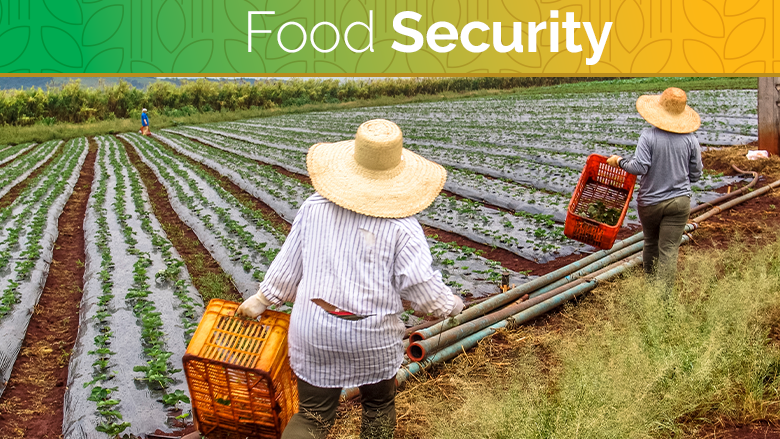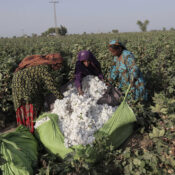
The Power of Vertical Farming in a Sustainable Future
Introduction:
With the increasing challenges of feeding a growing global population and the limitations of traditional farming practices, it is crucial to explore innovative approaches to agriculture. Vertical farming has emerged as a promising solution, enabling the cultivation of crops in vertically stacked layers within controlled indoor environments. This essay delves into the concept of vertical farming, its potential to revolutionize agriculture, and its significance in paving the way towards a more sustainable future.
Maximizing Crop Production in Limited Space:
Traditional farming often requires vast expanses of land, which are becoming scarce due to urbanization and land degradation. Vertical farming offers a revolutionary solution by maximizing crop production in a limited space. By cultivating crops in vertically stacked layers, vertical farms can significantly increase the yield per area compared to traditional farms. The ability to grow crops closer together and throughout the year reduces the need for land expansion, thereby preserving natural habitats and promoting biodiversity.
Smart LED Lighting: Illuminating the Path to High-Quality Crops:
One of the key components of vertical farming is the utilization of smart LED lighting systems. LED lights provide an optimal light spectrum, closely mimicking natural sunlight. With the ability to customize lighting conditions for different crops, vertical farms can ensure the efficient photosynthesis and growth of plants. This technology not only promotes faster growth but also enhances the nutritional value and taste of crops, resulting in high-quality produce.

Hydroponic Systems: Nurturing Crops without Soil:
In traditional agriculture, soil is a vital component for plant growth. However, in vertical farming, hydroponic systems replace soil with nutrient-rich water solutions. Hydroponics allows plants to receive the necessary nutrients directly to their roots, resulting in faster growth rates and higher yields. This method drastically reduces water consumption as it circulates and reuses water, compared to traditional farming that requires significant amounts of water for irrigation. Moreover, without the need for soil, vertical farms are not susceptible to soil-borne diseases, reducing the use of harmful pesticides and herbicides.
Aeroponic Systems: A Breath of Fresh Air for Crop Cultivation:
Another innovative technique used in vertical farming is aeroponic systems. Aeroponics involve growing plants in mist or air, with nutrient-rich solutions sprayed directly onto the roots. This method enhances water efficiency, as it uses significantly less water compared to hydroponics, while still allowing for optimal nutrient absorption. Additionally, by exposing plant roots to oxygen in the air, aeroponics promotes accelerated plant growth and higher nutrient uptake, leading to healthier crops.
Climate Control Technologies: Creating the Perfect Growing Environment:
Vertical farming relies on advanced climate control technologies to create the ideal growing environment for crops. Maintaining optimal temperature, humidity, and CO2 levels is crucial for crop growth and development. Vertical farms are equipped with sensors and AI systems that continuously monitor and regulate these factors to ensure maximum crop production. By providing plants with the perfect environment for growth, vertical farming minimizes crop losses due to adverse weather conditions, making it highly efficient and reliable.
Reducing Water and Energy Consumption: Sustainability at its Core:
Sustainability lies at the heart of vertical farming. One of its fundamental advantages is the significant reduction in water consumption. Through advanced irrigation techniques and recycling systems, vertical farms can reuse and circulate water, minimizing waste and conserving this precious resource. Furthermore, the integration of smart LED lighting and efficient climate control technologies minimizes energy consumption. LED lights consume less energy compared to traditional lighting systems, and AI-driven climate control systems optimize energy usage, making vertical farming not only environmentally friendly but also economically viable.
Vertical Farming and Food Security: Meeting Growing Global Demand:
The world’s population is expected to reach 9.7 billion by 2050, raising concerns about food security. Vertical farming has the potential to address this challenge by providing fresh produce in urban areas where traditional farming may not be feasible. By establishing vertical farms in urban centers or even within buildings, communities can have access to locally grown, nutrient-rich produce, reducing dependence on long-distance transportation and ensuring a more sustainable and resilient food supply.

Overcoming Barriers and Embracing the Future of Farming:
While vertical farming offers immense potential, several barriers need to be overcome for its widespread adoption. Initial setup costs, technological limitations, and public acceptance are among the challenges that need to be addressed. However, collaborative efforts between researchers, entrepreneurs, and policymakers are crucial in driving innovation, advancing research and development, and ensuring supportive regulatory frameworks. By embracing the potential of vertical farming and overcoming these barriers, we can transform the future of agriculture and create a sustainable and resilient food production system.
Conclusion:
Vertical farming holds the key to revolutionizing agriculture and paving the way towards a sustainable future. Through maximizing crop production in limited space, harnessing smart LED lighting, employing hydroponic and aeroponic systems, and utilizing climate control technologies, vertical farming offers a more efficient, eco-friendly, and resilient approach to food production. By reducing water and energy consumption, meeting the growing demand for food security, and embracing innovative solutions, we can secure a healthier and more sustainable future for generations to come.
All Categories
- Agricultural Methods
- Agriculture and Women Small Farmers Rights Awareness
- Climate Change
- Disable and Human Rights
- Disable Jobs
- Donation
- Education
- Health Issues
- Organic Foods
- Organic Vegetables
- Orphans Children
- Plastic production and disposal
- Services
- Sinking in Scarcity
- Success Stories
- Uncategorized
- Waste Management
- Women Rights
- Youth Empowerment




